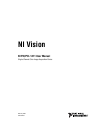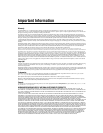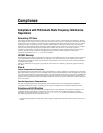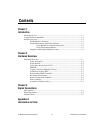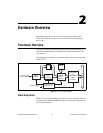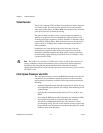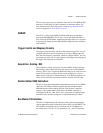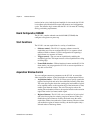
Chapter 1 Introduction
NI PXI/PCI-1411 User Manual 1-2 ni.com
Using PXI with CompactPCI
Using PXI-compatible products with standard CompactPCI products is an
important feature provided by the PXI Specification, Revision 1.0. If you
use a PXI-compatible plug-in device in a standard CompactPCI chassis,
you cannot use PXI-specific functions, but you can still use the basic
plug-in device functions.
The CompactPCI specification permits vendors to develop sub-buses that
coexist with the basic PCI interface on the CompactPCI bus. Compatible
operation is not guaranteed between CompactPCI devices with different
sub-buses nor between CompactPCI devices with sub-buses and PXI.
The standard implementation for CompactPCI does not include these
sub-buses. The NI 1411 device will work in any standard CompactPCI
chassis adhering to the PICMG 2.0 R2.1 CompactPCI core specification.
Software Overview
Programming the NI 1411 requires the NI-IMAQ driver software for
controlling the hardware. National Instruments also offers the following
application software packages for analyzing and processing your acquired
images.
• Vision Builder for Automated Inspection (AI)—Allows you to
configure solutions to common inspection tasks.
• National Instruments Vision Development Module—Provides
customized control over hardware and algorithms.
The following sections provide an overview of the driver software and the
application software. For detailed information about individual software
packages, refer to the documentation specific to each package.
NI-IMAQ Driver Software
The NI 1411 ships with NI Vision Acquisition Software, which includes
the NI-IMAQ driver software. NI-IMAQ has an extensive library of
functions—such as routines for video configuration, continuous and single
shot image acquisition, memory buffer allocation, trigger control, and
device configuration—you can call from the application development
environment (ADE). NI-IMAQ handles many of the complex issues
between the computer and the image acquisition device, such as
programming interrupts and camera control.



